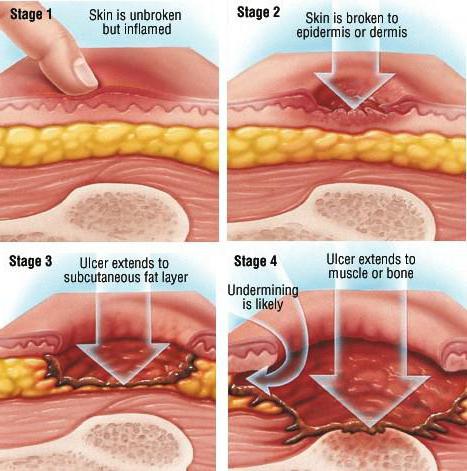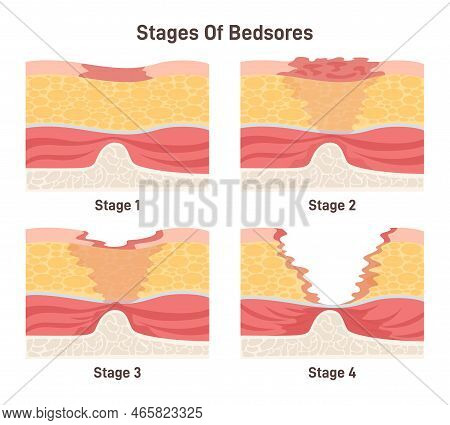
While bedsores can come in a variety of stages, some are more severe than others. These include stage three and stage four bedsores. The first two stages involve an open wound with loss of skin and underlying tissue. In the latter, skin and tissue may become infected and be exposed. These unsightly lesions can cause serious damage to the joints and muscles. Luckily, these bedsores generally heal within a few weeks or months if they are treated promptly.
There are four stages of bedsores: Stage one, two, and three. The first two are the easiest to treat, and the third and fourth are the most dangerous. Obviously, the more serious the bedsore is, the harder it is to treat it and keep it from getting worse. But if you’re lucky, stage one is still the easiest to treat. You may notice ash or purple skin around the affected area, especially if the patient has a dark skin color.
The second stage is the most difficult. It is characterized by a small crater. In the third stage, the bedsore progresses, exposing bone and fatty tissue. Deeper bedsores can lead to life-threatening infections, so it is important to start treating them as early as possible. If left untreated, they may even progress to the next level. The sooner you treat a bedsore, the more likely it is that the infection will go away and be completely cured.
The severity of bedsores varies, but there are four different types. The first stage is the first stage, which is the most severe. Stage one pressure ulcers are not associated with skin damage. The skin may be red or ashy, and the affected person may have discolored or deformed skin. This type of bedsore is the easiest to treat and is the most common.
In the second stage, the skin ruptures, creating a shallow crater. Stage three pressure ulcers are deeper and may expose bone or fatty tissue. If left untreated, these bedsores can progress to stage four. However, the best way to treat them is to see a doctor Diann Alatas or go to a hospital for treatment. If left untreated, the condition may worsen. You should avoid these types of bedsores and treat them as soon as possible.

Stage one pressure ulcers are stage one pressure ulcers. The skin swells and begins to bleed. The second stage is caused by the appearance of bedsores on the skin. In this case, the patient will not experience pain and will feel very weak. If he or she develops a stage one pressure ulcer, he or she should seek medical attention immediately. The last two stages, if left untreated, will lead to more severe and life-threatening complications.
A bedsore of the second stage is more severe than the first stage. This stage affects all layers of the skin and can be life-threatening. It is important to see your doctor as soon as possible if you notice any of these symptoms. It is extremely important to undergo treatment if you have a stage 1 bedsore. You will need a doctor to treat it properly and prevent it from progressing to stage four.
Stage one bedsore is the least serious. It doesn’t cause broken skin or other visible symptoms. Fair-skinned patients may have different color or consistency of the skin. A stage one bedsore is usually painless but will progress to a deeper stage if left untreated. In addition to pain, patients may have a hard time managing the ulcer, which makes it difficult for a family to take care of the patient.
Stage two bedsores are more serious. They are often more advanced than stage one and require surgery to close. In addition to medical treatment, this type of bedsore may even pose a risk of spreading to deeper tissues. If it’s stage one, it’s important to consult with a health care professional before attempting treatment. If it’s stage two, it’s important to make sure that it’s not infected.
Stage three bedsores are more severe. The outer layer of the skin has sloughed off, leaving the dermis exposed. The bed sore will have an open wound, and the outer layer of skin will be red or pink. The sore may even become so deep that the patient will feel pain when putting pressure on it. At this stage, the sore will be painful to touch and may turn yellow.